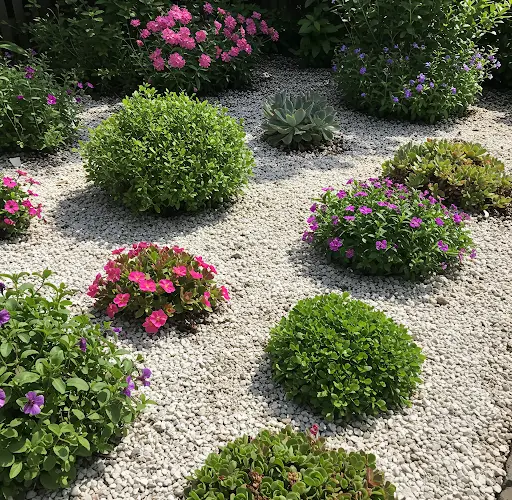How to Improve Garden Soil Naturally with Crushed Limestone
Healthy soil is the foundation of a thriving garden. For plants to grow strong and productive, the soil must provide the right structure, nutrients, and pH balance. One powerful and natural way to achieve this is by using limestone, a rock-derived amendment that transforms soil health from the ground up. This guide will walk you through the benefits of using limestone in your garden and how to apply it effectively for long-term success.
Why Limestone Is Beneficial for Your Soil
Limestone is a natural mineral rich in calcium carbonate, a compound that plays a vital role in balancing soil pH—especially in acidic soils. When the pH level of soil becomes too low, nutrient absorption is hindered, which can lead to poor plant growth and reduced yields. By neutralizing excess soil acidity, limestone allows essential nutrients such as nitrogen, phosphorus, and potassium to become more accessible to plants.
But the benefits of limestone go beyond pH balance. It also:
-
Improves soil texture, creating a looser, more crumbly structure ideal for root development.
-
Enhances water retention, allowing soil to hold moisture better during dry periods.
-
Boosts aeration, ensuring plant roots receive enough oxygen for healthy growth.
-
Replenishes calcium, an essential nutrient that strengthens plant cell walls and contributes to overall plant vigor.
When and How to Use Limestone in the Garden
The best time to apply limestone is at the end of the growing season, during late fall or early winter. This timing allows the soil to absorb the limestone over the dormant season, giving it time to work its way into the soil before planting resumes in the spring.
Here’s a step-by-step guide to applying limestone to your garden bed:
Step 1: Prepare the Garden Bed
Begin by clearing the garden bed of any weeds. Weeds compete with your crops for nutrients and water, and they can harbor pests and diseases, so it’s important to remove them entirely. However, any leftover vegetation—such as stems, leaves, or other plant parts—should be kept, as they can later be used to enrich the soil.
Step 2: Crush and Spread the Limestone
Limestone is most effective when applied in a fine, powdered form. This texture allows for even distribution and quicker integration with the soil.
-
Use a mortar and pestle, grinder, or hammer to crush the limestone into a fine powder.
-
Once your garden bed is cleared, sprinkle a thin, even layer of this powder across the surface of the soil.
-
Ensure uniform coverage so all parts of the soil benefit from the amendment.
This application acts as a natural soil conditioner, enhancing soil fertility and supporting microbial life.
Step 3: Apply Organic Mulch
Now it’s time to repurpose the leftover vegetation. Chop the stems, leaves, and plant remains into small pieces to create a mulch layer. This organic material serves several functions:
-
Protects the soil from erosion and moisture loss.
-
Provides nutrients as it decomposes.
-
Encourages microbial activity, which improves soil health.
Spread this organic mulch evenly over the limestone layer to create a protective covering.
Step 4: Lightly Mix the Top Layer
With both the limestone and organic mulch in place, gently mix the top few inches of soil. This step doesn’t require deep digging—just enough to blend the top layer so the limestone and organic matter can begin interacting with the soil more effectively.
This shallow incorporation helps:
-
Start the breakdown of organic material.
-
Disperse the limestone across a broader surface area.
-
Stimulate microbial activity that aids in nutrient cycling.
Step 5: Let the Soil Rest
After preparation, allow the garden bed to remain undisturbed for at least 3 to 4 weeks. During this period, the limestone begins adjusting the soil pH, while the organic matter slowly decomposes, enriching the soil with nutrients and humus.
Leaving the soil to rest through the winter ensures that by spring, you’ll have:
-
A well-balanced pH level.
-
Improved soil texture and moisture retention.
-
A rich environment full of life and nutrients ready to support vigorous plant growth.
The Long-Term Payoff
Preparing your soil with limestone in advance of the growing season is an investment in your garden’s long-term health. The calcium and pH balance provided by limestone create the optimal conditions for nutrient uptake and root development. Combined with organic mulch, this method significantly boosts soil fertility, aeration, and water-holding capacity.
By giving your soil the attention it needs now, you set the stage for a productive and resilient garden come spring. Whether you’re growing vegetables, herbs, or flowers, your plants will thank you with stronger growth, better resistance to stress, and more abundant yields.
A little effort now means a flourishing garden in the seasons to come—one that thrives naturally, from the ground up.



